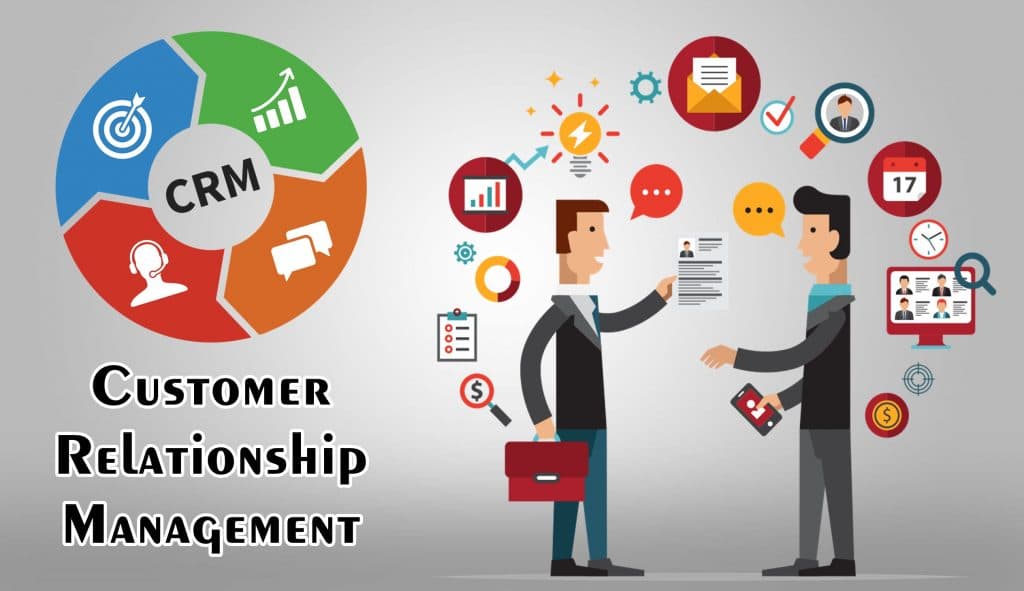

- Directory
- Recent
-
Featured
-
Featured
- Recent
-
- Programs
- Digital Nomad
- Side Gigs
- Resources
Select Page
10 people find this post amazing!

In this video, you will learn 25 email marketing tips and tricks for beginners, as well as best practices. Email marketing has taken over as one of the top ways to convert traffic into sales online and continue to be that way through the rest of 2016 and beyond. If you aren’t getting as many subscribers, clicks, or sales conversions as you want from your internet marketing, you probably need to get back to the basics with your email strategy.
These strategies and tactics should get you on track towards making significant progress in your email marketing. Enjoy the video full of email marketing tips and tricks for beginners! Email marketing is the second most effective eCommerce marketing channel after the search, according to a study by Custora.
So, While there may be a tendency to think that email marketing becomes less relevant as social media channels take over, nothing could be further from the truth. It’s changed. Gone are the days when email was used as the first point of contact in un-targeted, ‘cold’ campaigns: spam rightly earned a terrible name.
However, email marketing has morphed into a fantastic tool for laser targeting an audience and promoting click-throughs from potential customers, who you have already met and engaged on social media or elsewhere. When used successfully, email marketing campaigns are excellent relationship builders and handy sales tools; they are either still seen as spam or a waste of time when used poorly.
So the secret is in the way you use it; your skill at crafting emails that hit the right spots with your audience.
And like all skills, this can be improved with know-how and practice. This post is about applying email marketing to convert more sales, increase profits, and grow your business.
In this video, I’ll show you 13 small business marketing tips to use on any website. Your website is one of the most valuable assets you can have when it comes to your business. The problem is, it can be tough to get it off the ground and start seeing some traffic. One of the best ways to get that traffic so you can start earning some online sales is to create content consistently through blogging.
I’m going to show you an example of a website that gets hundreds of thousands, if not millions of visitors per year just by using simple marketing tricks combined with blogging.
These strategies are fundamental as you generate awareness and revenue for your organization:
A key mistake is thinking that “anyone” is your buyer. Larger companies may be able to appeal to a wide market, but they say, “the riches are in the niches” for a reason. A niche is where you’ll have the most leverage as a small business. And to develop a niche and appeal to buyers within the niche, you must understand their pains, problems, triggering events, and priorities.
What is pushing them to make a purchasing decision? What does it look like if they succeed? Knowing these things will help you craft messaging that resonates and makes a compelling case for your solution. Start by thinking about your existing customers and who you’d like to work with. Then, create a buyer persona to start the process of getting into the head of your ideal client.
If there’s no difference between you and your competition, there’s no reason why a buyer would be compelled to work with you. Your value proposition is what will differentiate you from others in your space and make up your prospects’ minds that you’re the provider to go with. What do you do better than anyone in the industry? Conveying this makes a compelling argument.
If you’re exploring the world of marketing, you may have noticed that there are a gazillion directions you can go in. It’s tempting to do it all at once and craft a complicated machine in hopes that you covered all your bases, and it’s easy to take on too much.
Instead, identify where the biggest impact will be. Where is the biggest blind spot in your marketing that’s prohibiting your growth? Set a performance goal around that one key area and focus your resources on the activities and tactics that will achieve that one performance goal. You can expand your efforts or pivot to other initiatives when you’ve made more progress toward that singular goal.
Start scrappy. As you scale, it’s critical to see ROI sooner. This will give you the momentum and cash flow to put toward larger projects, long-term plays, and more sustainable growth models. Tactics that take time to build (such as SEO) are poor fits for your primary initiatives because you won’t see a return soon enough for your liking.
If you have enough resources to start there, great, but don’t put all your eggs in that basket. If you have evidence that people are taking to Google with purchasing intent for your particular solution, you may find that paid ads will give you that short-term ROI.
Once you have your initiatives running and you’ve experimented with a few things, pay attention to the data. This can inform you of what’s working. As you scale, it’s a good idea to double-down on proven methods of generating revenue.
It costs, on average, five times more to acquire a new customer than close an existing one. This means you shouldn’t stop marketing once they’ve made a purchase.
Identify your opportunities for repeat purchasing, upselling, and cross-selling. Because your existing customers have already made a purchase, they already know, like, and trust you.
If you’ve provided a good experience, you’ve given them a reason to do business with you again should the need ever arise. Even if the need doesn’t arise (in cases where it’s a one-and-done purchase with no upsell opportunities), you should still delight your customers. Word of mouth is a powerful (and free) promotional tool.
Speaking of free promotional tools, it’s important to note that since you’ve committed to a limited goal and scope, there’s no need to inflate your overhead with gadgets. Use free promotional tools where possible, and only commit to paid tools if you know they will drastically improve existing operations or performance. Here’s a helpful list of marketing tools (some free and paid).
1.Create a website to own your online presence.
2.Consider blogging to attract prospects for your website.
3.Promote yourself on social media.
4.Invest in ads.
5.Make sure you’re capturing web prospects’ information.
6.Use email marketing to nurture leads.
7.Manage relationships with a CRM.
8.Lean into word of mouth as a promotion channel.
Having a professional-looking website is one of the most important assets you will create for your small business. This is where you will show who you are, what you offer, where you are, and how a potential customer can get in touch with you.
It is a channel you will always own (unlike other platforms that may change policies or go in and out of style), and it has the capability of generating organic traffic in addition to being a place to send traffic from advertising and other marketing initiatives.
Your website isn’t just a simple brochure, either. You have the capability of turning it into a 24-7 salesperson by understanding how to convert traffic and turn them into leads (more on that later). For one of the best website tools, check out HubSpot’s CMS.

Blogging is a great way to generate organic traffic, particularly for those prospects who have not reached a purchasing decision yet. In addition, it can establish credibility in your space and position you as a thought leader. To start a blog, you can use an inexpensive or free website tool to make a free site and use one of their templates.
Even if you only publish once a week, it will improve your website’s visibility online and help educate your potential customers on why they should trust your company. If you’re planning to write your posts yourself, check out this beginner’s guide to writing.
Once you start writing, you can add a call-to-action on your posts for visitors to subscribe to your blog and receive emails This is a great way to start collecting leads and offering potential customers a way to get information if they aren’t ready to buy anything from you yet.
Social media might seem like it’s just a fun platform for people to socialize and connect, but it’s actually a powerful business tool. Social media can help you increase traffic, improve your search engine rankings, and engage with potential customers. Why wouldn’t you want to be seen where your potential customers spend their time?
Organic traffic takes a while to build, and as a small business, you want to invest in short-term plays. Pay-to-play type of tactics targeting buyers with high intent is great for short-term wins to jump-start other objectives. Google Ads are perfect if you know that your target audience is searching the web for your product or solution.
If they aren’t, you might consider social media ads instead. Individuals on social media have less buying intent, but with highly targeted ads and enough impressions, you’ll gain the interest of your audience.
We’ve been talking a lot about visibility and traffic but haven’t really covered how these will help drive revenue yet. One simple way to start generating leads or customers from your website is to implement a conversion tool. A simple, free option is HubSpot Marketing Free.
By using this tool to add a pop-up widget to your website, you can start collecting the email addresses of potential customers. From there, you can send out promotions and offers and convert them into paying customers. You can also implement any of these 24 conversion tools to help you optimize your website and use it to drive leads.

Just because you’ve converted website traffic into leads doesn’t mean those leads are ready to buy yet. It’s important to stay top of mind and move them closer to a purchasing decision. Email marketing is a critical part of your marketing toolkit. In fact, 73 percent of millennials prefer communications from businesses to come via email.
This strategy is an easy, free, and scalable way to communicate with both new and existing customers. Once you have an email marketing tool in place (many are inexpensive or even free), experiment with emailing out newsletters (with your sleek new blog posts), and other promotions to your database.
We know small business owners don’t have tons of free time to devote to digital marketing, so consider using marketing automation to make this process even easier for yourself. To get started planning your email marketing strategy, check out this guide and template from HubSpot.
Email marketing works best when you’re sending personalized, targeted emails. This begins with a customer database or customer relationship management (CRM) system. Your CRM stores information about your leads, prospects, and customers so that you can keep track of customer interactions and identify sales opportunities more effectively.HubSpot has one of the best CRMs (and best of all, it’s totally free).
As mentioned previously, delighting customers can have a big impact on your business, primarily in repeat purchases and word of mouth. If you provide a great experience, your customers will be more inclined to leave reviews, give testimonials, and tell their friends about you.
If you need further convincing that digital marketing is right for your business, get in touch with us. At Crucial Constructs, We’re willing to listen to you and answer your questions. Contact us today!
“This is a learning process and sometimes you have to fall in order to learn things.” – Christine Korda
“Find your spirit, and no challenge will keep you from achieving your goals.” – Christopher Penn
“Find your spirit, and no challenge will keep you from achieving your goals.” – Christopher Penn
Learn More about Crucial Construct Academy: Click Here Now!
Learn More about the Academy here: Click Here Now! The Crucial Constructs Academy is a Free Video Training Course Available only to our Readers and Subscribers. A thorough and detailed training available to you. Find out more about it here. Click and Learn.
Table of Contents

Achieve Your Goals Now!
